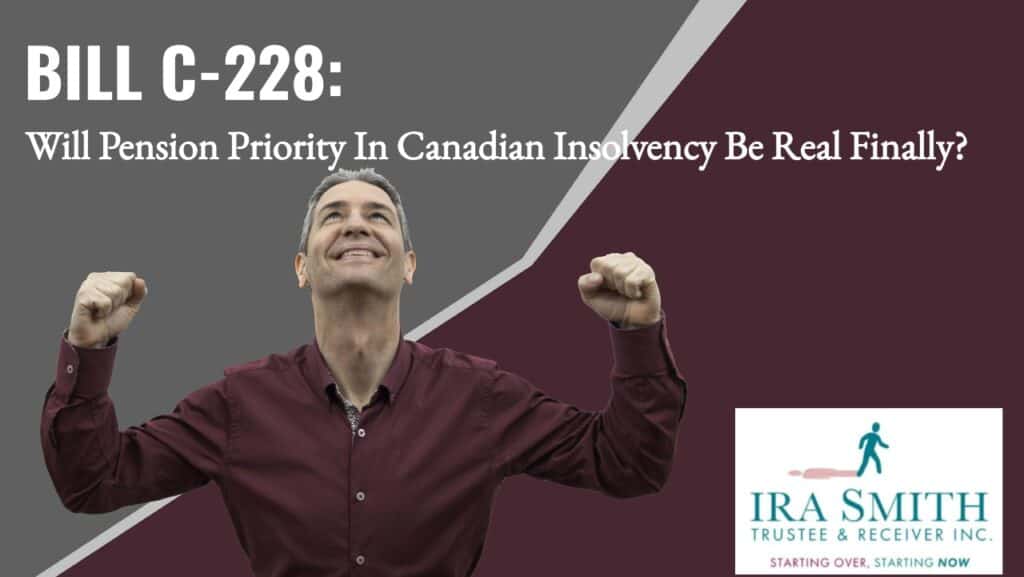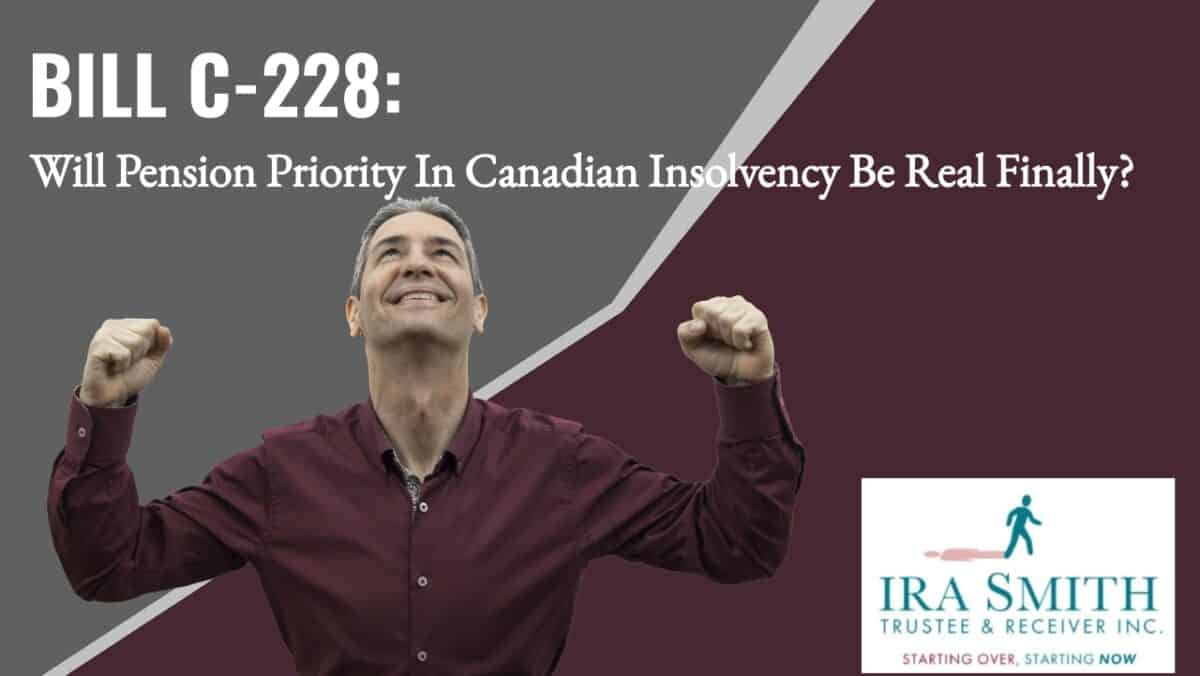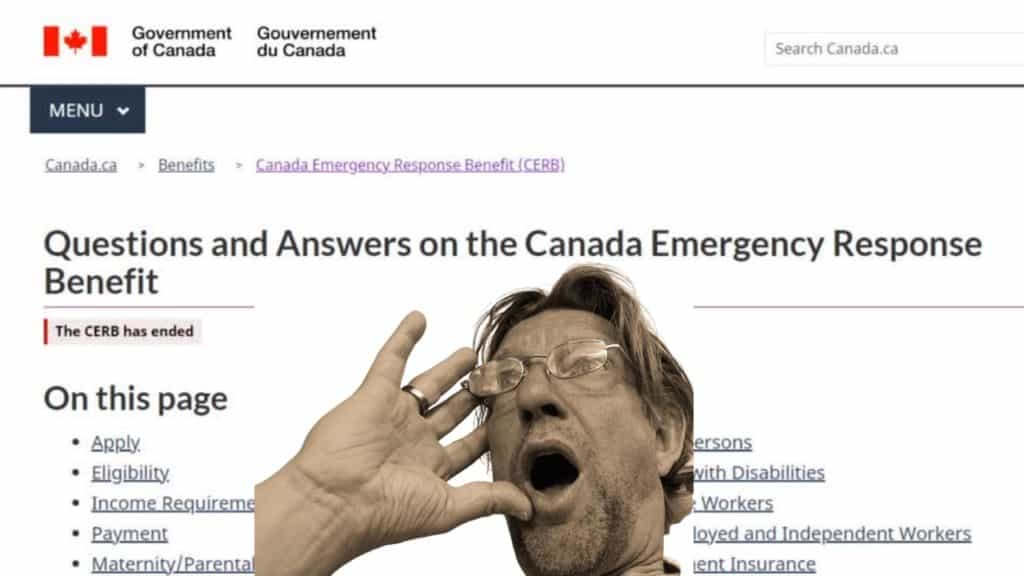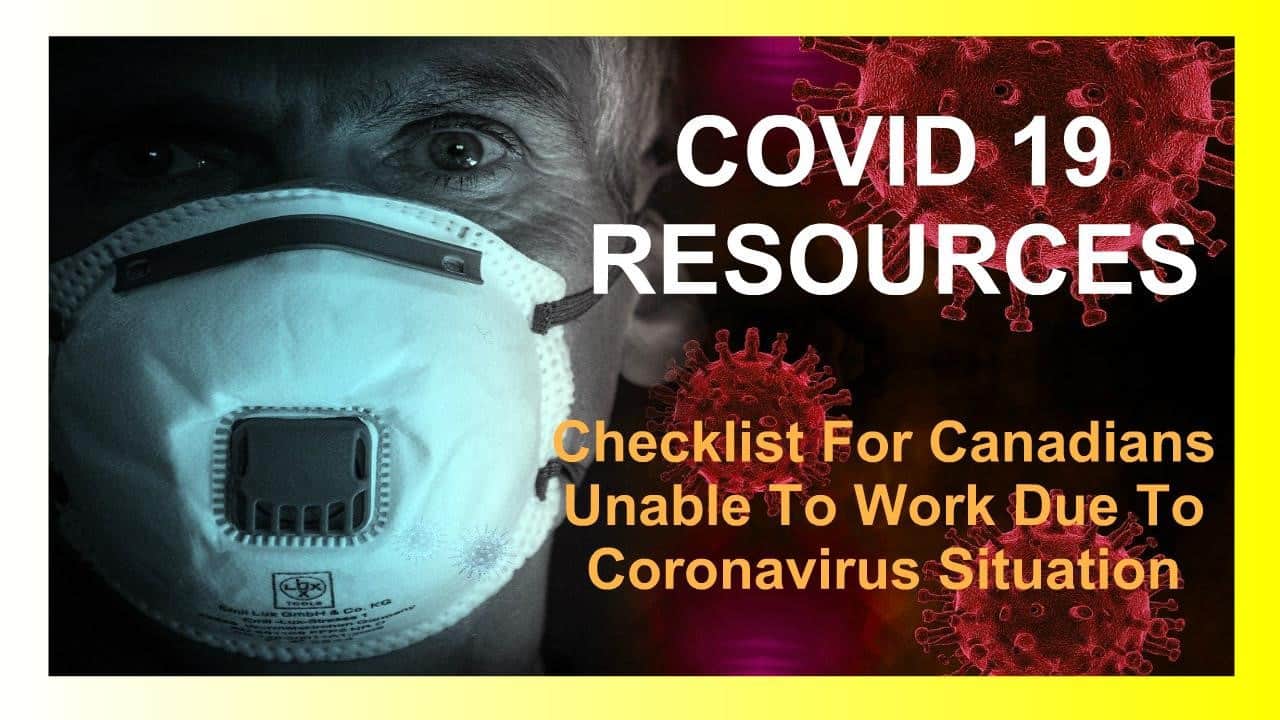Bill C-228: Are pensions protected in Canadian insolvency proceedings?
The long-awaited Bill C-228, an Act to amend the Bankruptcy and Insolvency Act, the Companies’ Creditors Arrangement Act and the Pension Benefits Standards Act, 1985 proposes to give priority and therefore some financial security to pensions of workers in the event of a Canadian insolvency of their employer, may finally soon become law. This is a significant victory for pensioners and unions across the country who have been advocating for this change for many years.
This new law will provide much-needed protection for pensioners in case of the insolvency of pension plan sponsors. It is a major step forward in ensuring that pensioners are able to retire with dignity, security and frankly, what they bargained for.
Bill C-228: Right now pensions in bankruptcy can be taken away
The Canadian insolvency system has come under heavy analysis and criticism for years for its treatment of pensioners when the employer goes bankrupt or files for bankruptcy creditor protection. Bill C-228 comes from a long line of private members’ bills presented in the House of Commons of Canada that never went anywhere – until now. It makes every effort to make previous employees getting a pension, and those who someday expect to get payments from their pension plan, a priority in the insolvency process.
In this Brandon’s Blog, I discuss the current status of Bill C-228 and its implications in making pensioners a priority in bankruptcy if it becomes law as presently composed.

Bill C-228: What can cause you to lose your pension?
Underfunding is a major concern for traditional, defined-benefit pension plans (DB Pension Plans). In other words, do they have enough pension assets and therefore enough money to meet their projected future pension obligations of insolvent pension funds? Inadequate actuarial assumptions, poor investment returns, and mismanagement can lead to pension plan underfunding. In the case of corporate insolvency of a large employer with a DB Pension Plan, this issue always arises. Underfunded pensions in bankruptcy wind up hurting retirees.
The Sears Canada court-supervised liquidation forced us to again focus on the treatment of pensioners in corporate bankruptcies under the Bankruptcy and Insolvency Act (Canada) (BIA) or restructurings and liquidations under the Companies’ Creditors Arrangement Act (CCAA). It was widely reported that representative for 17,000 Sears Canada retirees says insolvency laws are unjust when it comes to underfunded pensions.
When a company is insolvent and its DB Pension Plan is underfunded, pensioners suffer pension losses and ultimately income losses. In practice, pensioners’ rights are weak and highly inadequate, especially when pension plans are underfunded.
Although pension legislation at the provincial and federal level purports to offer some protection for amounts owing to an underfunded pension plan, insolvency legislation does not preserve that protection for the majority of those amounts. The insolvency protection of pensioners and pensions in bankruptcy proceedings is therefore limited.
Dr. Janis Sarra is the founder and director of the National Centre for Business Law and a professor at the Peter A. Allard School of Law. In her opinion, Canadian pensioners and employees are among the worst-protected pensions in bankruptcy and/or insolvency among 60 countries.
The history leading to Bill C-228
Let’s look at some history of attempts to protect pensions in bankruptcy. The Canadian Association for Retired Persons (CARP), a nationwide advocacy organization for Canadian seniors and retirees, lobbied politicians on Parliament Hill about legislation changes. According to CARP, the unfunded pension liability should be given priority so that it is handled first.
There is no priority for retirees when it comes to dividing up assets in bankruptcy, and CARP wanted to protect underfunded DB Pension Plans when the employer company goes through restructuring or bankruptcy.
CARP estimated that roughly 1.3 million Canadians, aside from the retired Sears employees, may be at risk due to underfunded DB Pension Plans. The closure of Sears Canada stores made the plight of retirees a top priority for CARP.
Marilène Gill, Bloc Québécois MP, introduced a member’s BILL C-372, on Oct. 17, 2017. It was intended to change the BIA and the CCAA. The change sought to correct the injustice faced by retired workers whose pension and health insurance policy benefits are not secured when their company declares bankruptcy or undergoes restructuring.
On October 17, 2017, Bill C-372 passed its first reading. The House rarely passes private member’s bills like this one. The Liberal Party did not support taking it further and allowed it to die.
Hamilton Mountain NDP MP Scott Duvall asked for leave to introduce Bill C-384 in the House of Commons on November 6, 2017. He proposed amending Canada’s insolvency laws so that companies must bring any pension fund to 100% before paying any other secured creditors. Additionally, it required companies to pay termination or severance pay owing before paying secured creditors. Similarly, this bill passed the first reading and then died.
Then, Senator Art Eggleton, P.C., proposed BILL S-253 shortly before his retirement to amend the insolvency legislation to deal with a pension deficit in Canada. After the first reading passed on September 18, 2018, the second reading followed on September 25. By introducing this bill, the BIA and CCAA would be amended. The plan proposed to give priority to claims for unfunded obligations or solvency deficiencies of pensions. This was applicable to both solvent companies as well as companies that might become insolvent if certain shareholder payments were made. That bill never went any further.

The current Bill C-228: Pension Protection Act
Then, Conservative MP Marilyn Gladu put forward her pension reform private member Bill C-228: An Act to amend the BIA, the CCAA and the Pension Benefits Standards Act, 1985. It passed 2nd reading on June 22, 2022.
According to the Hansard transcripts, she noted that the proposed legislation would ensure that pension funds would be paid before secured and unsecured claims. Unremitted source deductions for the Canada Pension Plan, Quebec Pension Plan, Employment insurance, and taxes would be taken first. Suppliers who take back goods delivered within a month of bankruptcy or receivership and unpaid wages or salaries would be paid next. Then payment for insolvent pensions would come next before the claims of secured and unsecured creditors.
It then got a referral to committee, the Standing Committee on Finance. Once the referral to the Finance Committee happened, it did not take long to get through the committee. The committee held three meetings between October 17 and 31. It passed through the committee and on November 23, 2022, it passed 3rd reading and Bill C-228 was adopted.
A cross-party collaboration of New Democrat, Bloc and Conservative MPs was now finally achieved in order to move forward with key legislation to protect workers’ pensions in commercial bankruptcy or insolvency proceedings. The Liberal government which previously did not have this on its radar also voted in favour. In fact, PM Trudeau has tried to take some credit for this private member’s bill in the House of Commons.
The bill has now moved on to the Senate of Canada for review and amendment before returning to the House for final approval. It passed its first reading in the Senate on November 24. It now seems to have sufficient support and momentum to ultimately become law.
The current Bill C-228: What will the Pension Protection Act do?
The purpose of the private member’s Bill C-228, which will be known as the Pension Protection Act. is to deal with the insolvency of an employer where there is an unfunded liability or solvency deficiency in an employee pension plan or the employer ceases to fund a group insurance plan. It will prioritize the pension payments for such pensioners and employee claims for pension entitlements.
The proposed legislation would also amend the Pension Benefits Standards Act, 1985 to require the annual tabling of a report on the solvency of pension plans.
The current wording of the proposed legislation proposes to accomplish pension security for retirees by amending existing legislation to deal with deficiencies of pension plans as follows:
- BIA section 60(1.5)(a), is the section that deals with employers trying to restructure through a BIA restructuring proposal. It already states that any pension amounts deducted from employees that were not paid into the pension fund must be in order for the court to consider approving the proposal.
- It will be amended such that the court cannot approve any employer restructuring proposal unless it stipulates that any amount required to make all special payments, as determined by section 9 of the Pension Benefits Standards Regulations, 1985, that should have been paid to correct any unfunded liability or solvency deficiency will be funded by the employer.
- It will also be amended so that any amount required to liquidate any other unfunded liability or solvency deficiency of the fund as determined at the time of the filing of the notice of intention or of the proposal if no notice of intention was filed, will be included.
- BIA sections 81.5 and 81.6, are the sections that deal with the event of bankruptcy proceedings and receivership proceedings. They will similarly be amended.
- CCAA section 5, which deals with the employer company with a pension plan, will be amended the same as the proposed amendments to the BIA. This will state that if the company participates in a prescribed pension plan for the benefit of its employees, the court may not sanction a compromise or arrangement unless there are the same provisions stated above to protect the interests of the employees.
- The Pension Benefits Standards Act, 1985 will be amended to require greater annual report requirements on the solvency of pension funds and their success in meeting funding requirements, and the corrective measures taken or directed to be taken by the Superintendent of Financial Institutions to deal with any pension plan not meeting the funding requirements.
As indicated above, there appears to be enough momentum for Bill C-228 to get through the Senate and ultimately receive Royal Assent to become an Act of Parliament. This will no doubt be a major change to bankruptcy protection insolvency proceedings in Canada relating to benefit plans if it becomes the new law dealing with pension plan deficits.
We will have to see if this Bill becomes law, once implemented and if there will be any unintended consequences. Time will tell if these changes will not have negative consequences on corporate restructuring and advisory, preventing what previously would have been successful restructurings of Canadian businesses, albeit on the backs of hard-working Canadians being the employees and retirees.
No doubt the insolvency community and the lending community will have to adjust to the new business environment. I will provide you with updates as they occur.

Bill C-228 transition period
The Bill, if passed, would introduce a four-year transition period between its implementation and the implementation of the proposed amendments. My guess is that such a long transition period has been established for two main reasons:
- to allow companies who currently are behind in their defined pension benefit payments to catch up; and
- to allow the lending community to try to figure out how they are going to adjust their commercial lending practices in this new reality.
Bill C-228: Pension reform to insolvency
I hope you enjoyed this Bill C-228 An Act to amend the Bankruptcy and Insolvency Act, the Companies’ Creditors Arrangement Act and the Pension Benefits Standards Act, 1985, Brandon’s Blog.
Revenue and cash flow shortages are critical issues facing entrepreneurs and their companies and businesses. Are you now worried about just how you or your business are going to survive? Those concerns are obviously on your mind. Coming out of the pandemic, we are now worried about its economic effects of inflation and a potential recession.
The Ira Smith Team understands these concerns of businesses and people facing a mountain of unsecured claims and financial liabilities. More significantly, we know the requirements of the business owner or the individual that has way too much financial debt. You are trying to manage these difficult financial problems and you are understandably anxious.
It is not your fault you can’t fix this problem on your own. The pandemic has thrown everyone a curveball. We have not been trained to deal with this. You have only been taught the old ways. The old ways do not work anymore. The Ira Smith Team makes use of new contemporary ways to get you out of your debt problems while avoiding bankruptcy. We can get you debt relief now.
We have helped many entrepreneurs and their insolvent companies who thought that consulting with a trustee and receiver meant their company would go bankrupt. On the contrary. We helped turn their companies around through financial restructuring.
We look at your whole circumstance and design a strategy that is as distinct as you are. We take the load off of your shoulders as part of the debt settlement strategy we will draft just for you.
We understand that people facing money problems require a lifeline. That is why we can establish a restructuring procedure for you and end the discomfort you feel.
Call us now for a no-cost consultation. We will listen to the unique issues facing you and provide you with practical and actionable ideas you can implement right away to end the pain points in your life, Starting Over, Starting Now.







